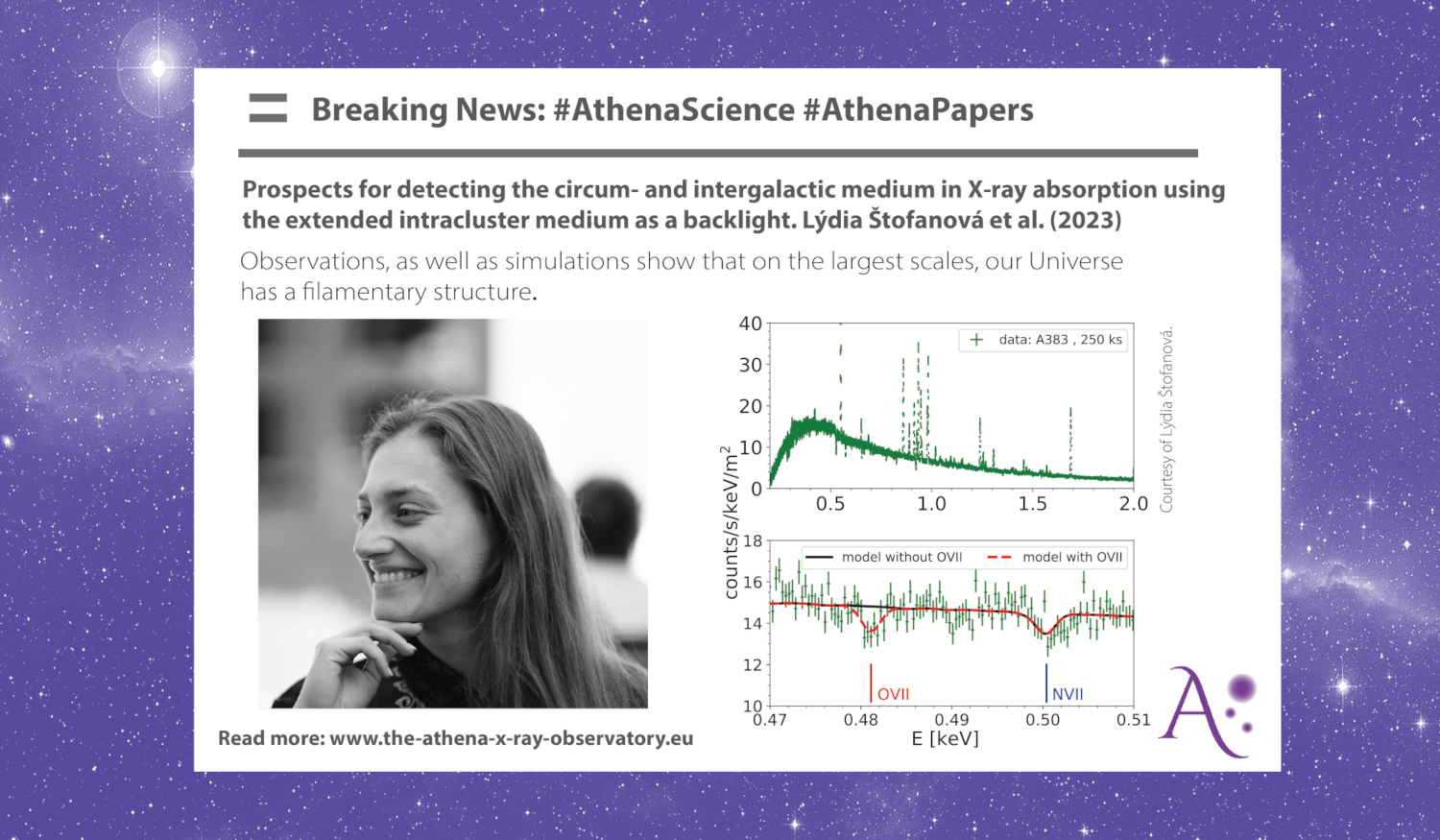
Prospects for detecting the circum- and intergalactic medium in X-ray absorption using the extended intracluster medium as a backlight

Broadband simulated spectrum for Athena/X-IFU in the energy range 0.2-2 keV (top panel), and a zoom-in to 0.47-0.51 keV (bottom panel) of one of the Hydrangea OVII absorbers placed in front of A383 for an exposure time of 250 ks. The black solid line represents the spectral model together with the three-component absorption model of the Milky Way ISM. The absorption line (NVII) of the local ISM is indicated with a blue vertical line. The red dashed line represents the same spectral model as the black solid line but with an addition of the Hydrangea OVII absorption line.
By Lýdia Štofanová,
Observations as well as simulations, show that on the largest scales, our Universe has a filamentary structure. The galaxy clusters sit in the nodes of this so-called cosmic web and are seemingly connected by cosmic web filaments. The properties of these cosmic web filaments are, however, still unknown.
Simulations of our Universe show that a significant fraction of the gas in these filaments has temperatures around 105-107 K and electron densities around ne~10-6-10-4 cm-3. Multiple detections in X-ray emission and absorption have been reported, however, none of these have ever reached a significance of 5 σ or higher. The detection of these cosmic web filaments in emission is very challenging since this gas is very diffuse and has a low X-ray surface brightness, therefore one has a higher chance of detecting it in absorption against distant point-like sources if the column densities are high enough. However, since the galaxy clusters are located in the nodes of the cosmic web, they can also act as a backlight source when observing filaments. Such an idea, which was originally suggested by Markevitch 1999, 2009 and later followed up by Simionescu+2021, has the advantage of not relying on distant sources which might or might not be randomly located on the line of sight.
In this paper, we provide the very first detailed study of using galaxy clusters, in particular cool-core galaxy clusters, as backlight sources for observing the OVII and OVIII absorption from cosmic web filaments with X-ray observatory Athena. The combination of Athena's large field of view and effective area, together with the unprecedented spectral resolution of the non-dispersive X-ray Integral Field Unit (X-IFU) microcalorimeter will enable us to search for absorption signatures against extended backlight sources, which was not possible in the past.
In this study, we simulated spectra of the large-scale structure filaments from the Hydrangea cosmological hydrodynamical simulations, as if they were observed in absorption against several cool-core galaxy clusters at different redshifts. Our results show that an OVII detection with a 5 σ significance can be achieved in 10-250 ks with Athena for most of the galaxy clusters considered. In conclusion, this offers yet another promising avenue for Athena to revolutionize our understanding of the hot gas pervading cosmic web filaments.
Access to the manuscript in ADS.

